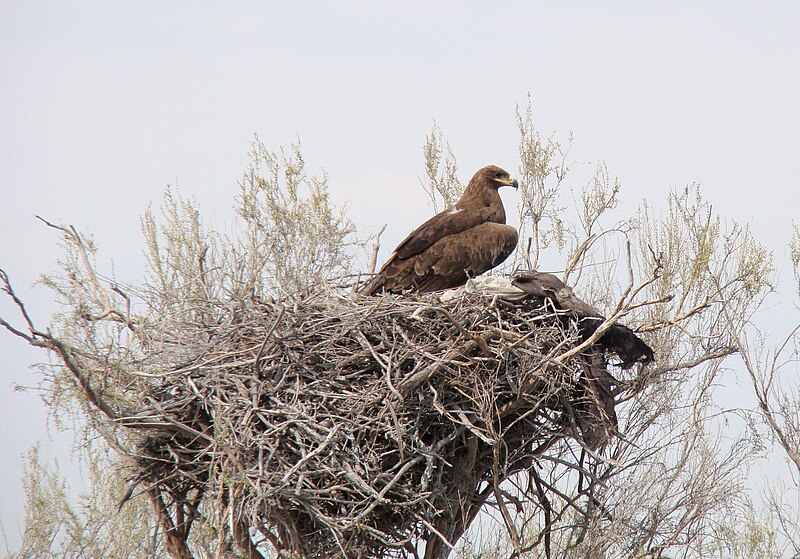Steppe Eagle Bird Details
- Asia: Kazakhstan, Kyrgyzstan, Mongolia, China, India, Nepal, Pakistan, Turkey
- Africa: Egypt, Ethiopia, Sudan, South Africa.
- Body: The Steppe Eagle is a large, broad-winged bird of prey, known for its robust and powerful build. It has a somewhat elongated body with a strong, muscular frame, allowing it to thrive in both soaring and ground-hunting activities. The body is well-adapted for long migrations across large distances.
- Tarsus Length: The tarsus (the part of the leg between the foot and the knee) is typically around 7.5 cm to 9 cm in length.
- Head: The head of the Steppe Eagle is relatively large, with strong neck muscles to support its hunting behavior.
- Eyes: The eyes are forward-facing with excellent binocular vision, critical for spotting prey from a distance.
- Bill: The bill is large, hooked, and powerful, ideal for tearing flesh from its prey. It is dark at the tip, with a lighter yellow base, typical of many eagles.
- Bill Length: The length of the bill can be approximately 4-6 cm.
- Tail: The tail is relatively short compared to the wings, and it is square-cut at the end. The tail helps with maneuverability during flight and acts as a rudder during soaring.
- Tail Length: The tail length is approximately 27 cm to 32 cm, depending on the individual eagle's size.
- Feathers: The feathers are dark brown, often with golden highlights on the nape and a lighter brown on the underparts. They are dense and durable, providing both insulation in cold weather and protection during long flights.
- Nest: The Steppe Eagle typically builds large nests, often reusing the same site year after year. These nests are placed in trees, cliffs, or on the ground in open areas, depending on the environment.
- Nest Made up of: The nest is constructed with sticks and branches, and it is lined with softer materials like grass, leaves, and animal hair for insulation and comfort for the eggs and chicks.
- Egg Width: The egg width ranges from 50 mm to 55 mm, which is proportional to the egg's overall size.
- Egg Weight: The weight of each egg is around 120 to 150 grams, depending on the size and age of the female.
Migration Pattern: The Steppe Eagle is a long-distance migrant. It travels from its breeding grounds in Central Asia to wintering grounds in Africa, the Middle East, and parts of South Asia. During migration, it soars over large distances using thermal currents.
Migration Period: Migration typically occurs between September and November for southward migration and between March and May for northward migration.
Migration Route: Steppe Eagles follow well-defined migration routes. They breed in regions such as Kazakhstan, Mongolia, and Russia, and migrate to wintering areas in India, East Africa, and the Arabian Peninsula. They often follow mountain ranges and coastlines to take advantage of thermals and avoid large water bodies.







